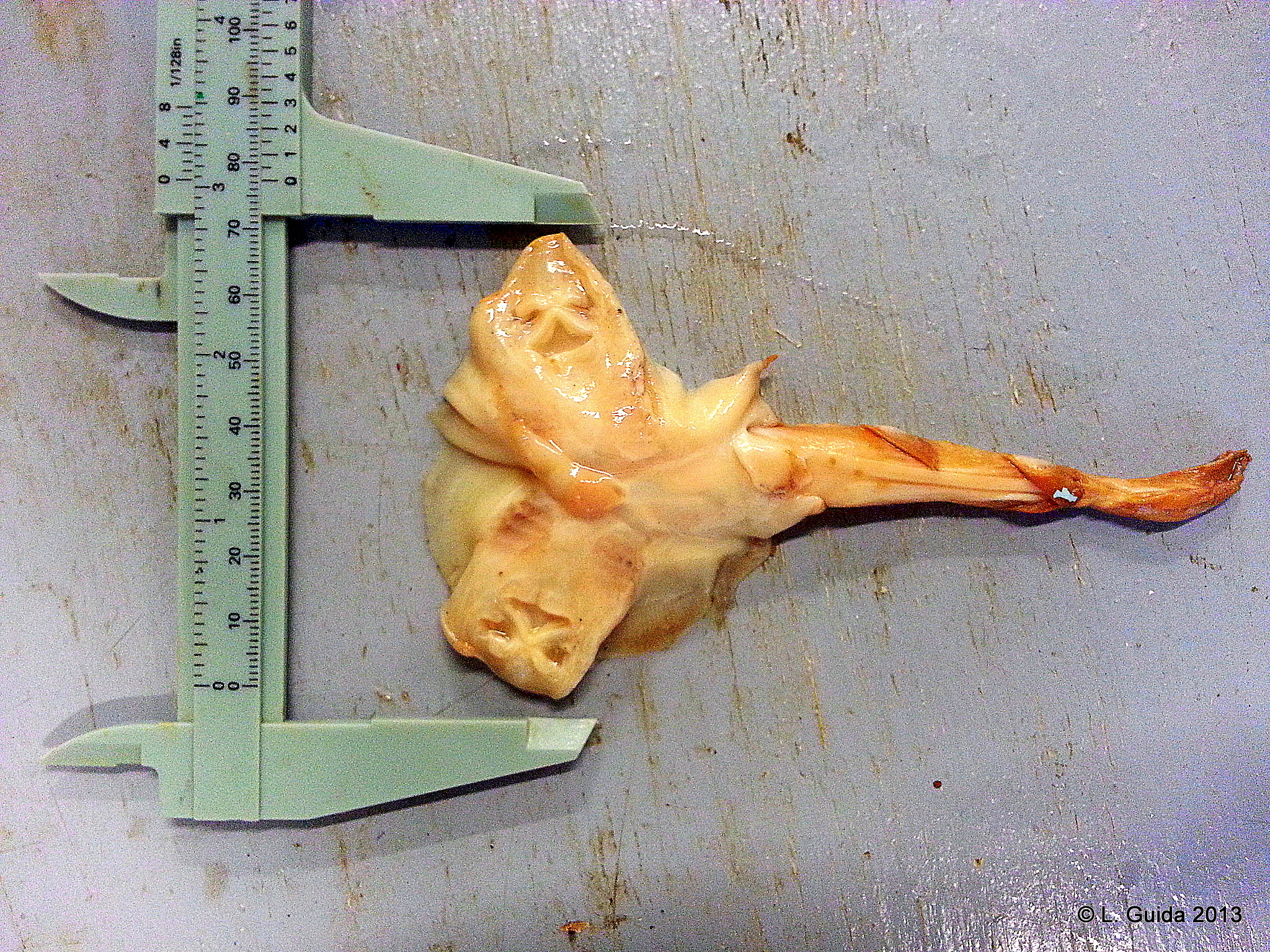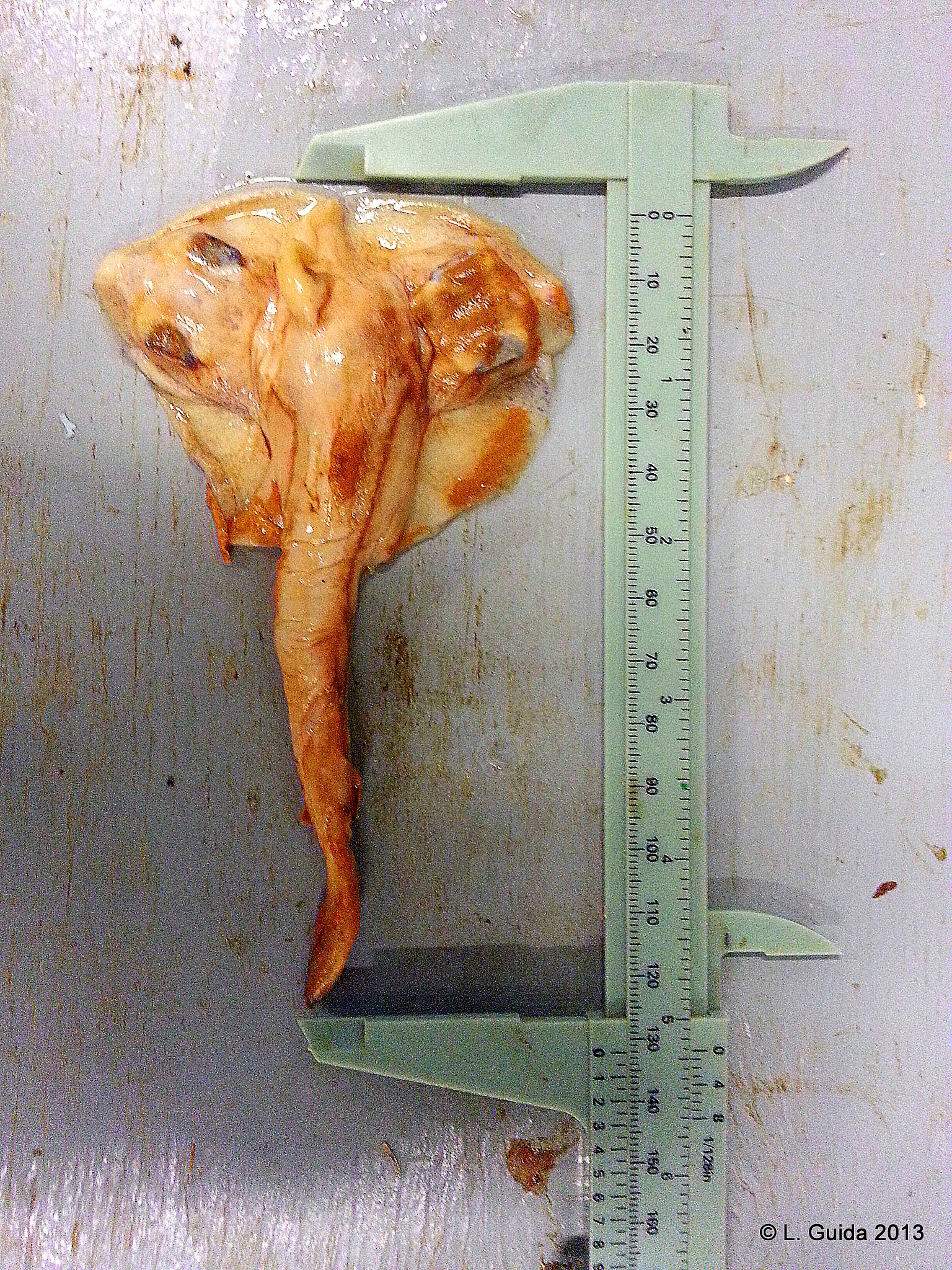Two-Headed Ray Fetus Found in Australia

They say two heads are better than one. That may or may not be true, but at the very least, two heads are more interesting.
While checking up on the pregnant female rays that he was caring for in an aquarium, Australian researcher Leonardo Guida saw that some of the animals had given birth, in April of this year. As he made note of the baby rays, an "oddly shaped, pale object in the water" caught his attention.
The object turned out to be a stillborn ray … with two heads. This is the first two-headed ray or shark discovered in Australia, and one of only a few examples worldwide of this rare birth defect found in sharks and rays, said Guida, who is a doctoral student at Monash University in Melbourne.
The defect arises when the neural tube (like a spinal cord) in a single fertilized egg is duplicated, which can happen as the result of a genetic defect or for other unknown reasons. It can also happen when an embryo begins to divide into two to form twins, but is stopped prematurely. [Cyclops of the Sea: Pictures of a One-Eyed Shark]
The cause in this case "is unknown but is likely to have been a developmental problem and not a genetic mutation per se," said Guida, co-author of a study describing the ray published Nov. 15 in the journal Marine and Freshwater Research. "Pollutants can potentially cause developmental issues, however we did not test for this nor were we able to determine the probable cause."

The researchers caught the southern fiddler rays (Trygonorrhina dumerilii) by hand while scuba diving in Swan Bay, a semi-enclosed section of Port Phillip Bay south of Melbourne, home to heavy ship traffic. The bay has recently undergone extensive dredging to enlarge shipping channels, re-suspending contaminated sediment into the ocean, according to the study. This developed, combined with the fact that rays eat bottom-dwelling creatures, may have exposed these animals to significant levels of pollutants. But whether or not they could've caused this birth defect is unknown, the study noted.
Other similar findings include the discovery of a two-headed bull shark fetus off Florida.
Sign up for the Live Science daily newsletter now
Get the world’s most fascinating discoveries delivered straight to your inbox.
"There have been a number of reports of deformed shark and ray embryos in recent years— two heads, one eye, etc.," said David Shiffman, a shark researcher and doctoral student at the University of Miami. There's no evidence to suggest these defects represent a new phenomenon or that they are harmful to shark populations as a whole, said Shiffman, who wasn't involved in the ray study.
"However, we're learning about the deformed embryos, because [in many cases] fishermen are killing the sharks," Shiffman said.
For instance, in 2011, a commercial fisherman in the Gulf of California discovered an albino fetal shark with one eye in the middle of its nose inside the belly of a pregnant dusky shark.
Many ray and shark species are being overfished, and one in six known species of skates, rays and sharks are considered threatened with extinction by the International Union for Conservation of Nature, an environmental group, he added.
Email Douglas Main or follow him on Twitter or Google+. Follow us @livescience, Facebook or Google+. Article originally on LiveScience.










